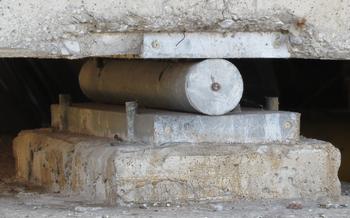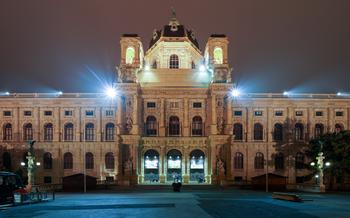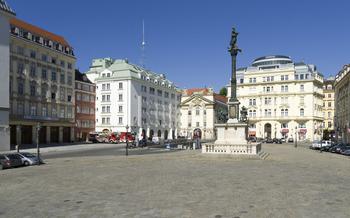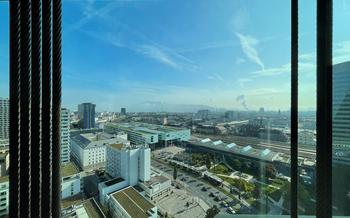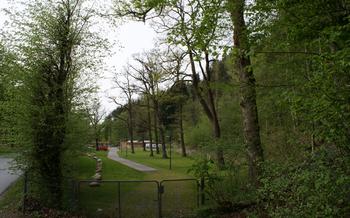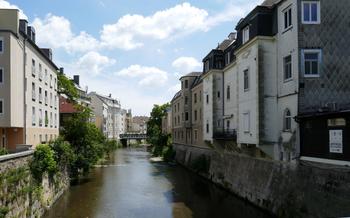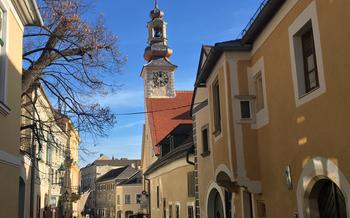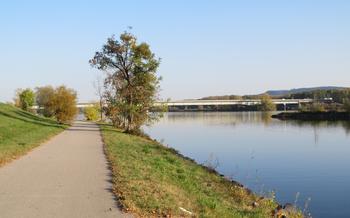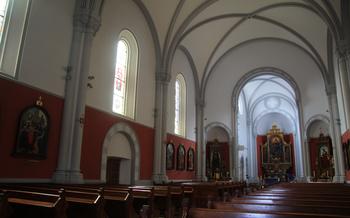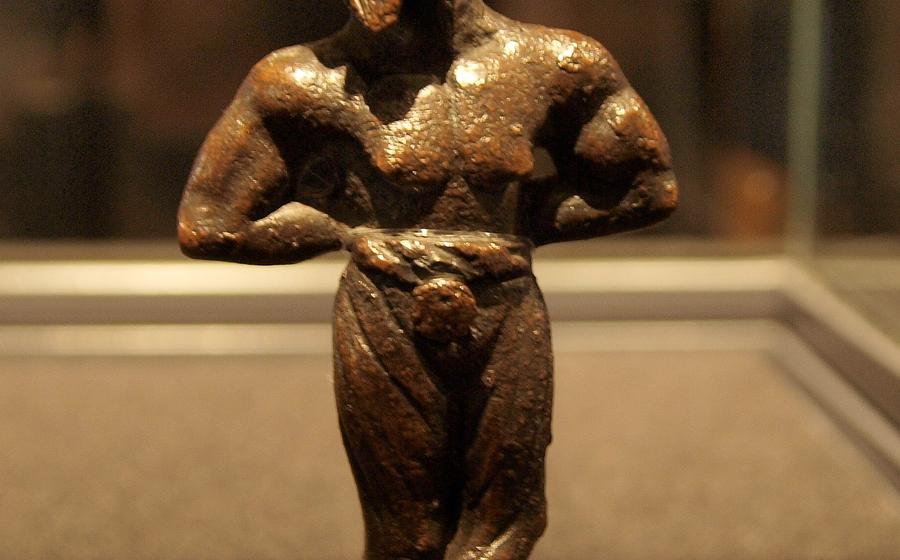
Roman Museum at the Hoher Markt
- A Stroll in the Roman Past
- Location, Location, Location:
- Opening Hours and Fees
- The Ruins Beneath
- Artifacts Galore
- Life in the Roman Military
- Multimedia Explorations
- Guided Tours
- Souvenirs and Publications
- Accessibility
- Photography and Social Media
- Events and Workshops
- A Walk Through History
- Insider Tip: Unraveling the Secrets of the Michaelerplatz
A Stroll in the Roman Past
Vienna, a city brimming with imperial grandeur, traces its roots back to an era when Roman legions marched across its lands. The Roman Museum at the Hoher Markt stands as a testament to this rich history, inviting visitors to delve into the origins of this vibrant metropolis.
Beneath the bustling streets of modern-day Vienna lie the remnants of the Roman city of Vindobona, a crucial military outpost established in the 1st century AD along the strategic Danube River. Over time, Vindobona flourished, becoming a significant center of trade and administration.
In the 19th century, during the construction of the Vienna City Hall, a remarkable discovery was made: the foundations of a Roman building, along with numerous artifacts. This chance find sparked extensive archaeological excavations, revealing a treasure trove of Roman ruins, including houses, temples, and public baths.
The Roman Museum, housed in a 14th-century building adjacent to the City Hall, serves as a gateway to this fascinating past. Within its walls, visitors can embark on a journey through time, exploring the remnants of Vindobona and uncovering the stories of its Roman inhabitants.
Location, Location, Location:
The Roman Museum is strategically positioned in the heart of Vienna's first district, Innere Stadt, at Hoher Markt Just a short stroll from the iconic St. Stephen's Cathedral, this museum is nestled amidst Vienna's rich historical tapestry. The easiest way to reach the museum is via public transport. Simply hop on the U3 subway line and alight at Stephansplatz station. From there, it's a mere 2-minute walk to the museum. Alternatively, you can take tram lines 1 or 2 and get off at the Schwedenplatz stop, which is a 5-minute walk away. For those arriving by car, there are several parking garages nearby, including the Am Hof garage and the Stephansplatz garage. Once you've arrived, look out for the striking 18th-century Palais Niederösterreich, which houses the Roman Museum. Its elegant façade, adorned with intricate stucco work and sculptures, hints at the historical treasures that await you within.
Opening Hours and Fees
The Roman Museum is open to the public from Tuesday to Sunday. Opening hours are from 9:00 AM to 5:00 PM. The museum remains closed on Mondays.
Admission fees for adults are set at €00, while children and young adults between the ages of 6 and 19 can enter for a reduced fee of €00. Additionally, visitors who possess the Vienna Card or any other valid city pass are entitled to free admission to the museum. It is advisable to purchase tickets online in advance, especially during peak tourist season, to avoid waiting in long queues.
The Ruins Beneath
In the heart of Vienna, beneath the bustling streets and modern-day buildings, lies a hidden treasure that transports visitors back to the Roman era. The excavations that unearthed the remains of Vindobona revealed a remarkable treasure trove of well-preserved foundations of Roman buildings, providing a glimpse into the architectural prowess of the ancient empire. These foundations showcase the intricate urban planning and construction techniques that characterized Roman cities, including streets, walls, and even a heating system that supplied warmth to the military barracks.
One of the most impressive features of the excavated ruins is the legionary headquarters, where the commanding officers of the Roman garrison resided. The foundations of this building reveal the grand scale and opulence of Roman military architecture, with its spacious rooms and fortified walls. The remnants of a temple dedicated to the Roman god Mithras stand as a testament to the religious practices of the Roman soldiers stationed at Vindobona.
The Roman Museum showcases a collection of artifacts recovered during the excavations, including pottery shards, coins, jewelry, tools, and weapons that offer a glimpse into the daily lives of the Roman inhabitants of Vindobona. These artifacts provide valuable insights into their customs, trade, and military activities.
A visit to the Roman Museum and the excavated ruins of Vindobona offers a unique opportunity to explore the ancient roots of Vienna. It's a journey through time that allows visitors to connect with the past and gain a deeper appreciation for the city's rich cultural heritage.
Artifacts Galore
The Roman Museum houses a vast collection of artifacts that provide a fascinating glimpse into the everyday lives of the Romans who inhabited Vindobona. These relics, unearthed during archaeological excavations, offer a tangible connection to the past and shed light on various aspects of Roman culture and civilization.
Among the most captivating artifacts are the pottery fragments, which showcase the intricate craftsmanship and artistic sensibilities of Roman potters. These vessels, used for cooking, storage, and serving food, feature a variety of shapes, sizes, and decorative motifs, reflecting the diverse needs and preferences of the Roman population.
Coins, another valuable source of information, provide insights into the monetary system and trade practices of the Roman Empire. The museum's collection includes coins from various periods, each bearing the effigies of Roman emperors and other prominent figures, as well as symbols and inscriptions that reveal details about their reign and policies.
Jewelry, a symbol of personal adornment and status, is also well-represented in the museum's collection. Rings, necklaces, brooches, and earrings, crafted from gold, silver, and bronze, showcase the Romans' love of ornamentation and their attention to personal grooming.
Tools and weapons, essential for daily life and military activities, offer a glimpse into the practical aspects of Roman existence. Agricultural tools, such as hoes and sickles, reveal the importance of agriculture in the Roman economy, while weapons, including swords, spears, and helmets, testify to the military prowess and defensive measures of the Roman army.
Life in the Roman Military
Vindobona played a pivotal role as a Roman military outpost, safeguarding the empire's frontiers along the mighty Danube River. Within its fortified walls, a garrison of legionaries and auxiliary troops maintained a vigilant watch, ensuring the security of the region. These soldiers, hailing from diverse corners of the Roman Empire, brought with them a rich tapestry of cultures and traditions that intertwined within the camp.
Daily life for the Roman soldiers in Vindobona revolved around military duties, training, and maintaining a state of readiness. Rigorous drills honed their combat skills, while strategic maneuvers tested their tactical prowess. Beyond their military obligations, these soldiers also engaged in recreational activities to foster camaraderie and unwind from the rigors of camp life.
The presence of a Roman military camp inevitably influenced the surrounding civilian population. Trade flourished as soldiers and locals bartered goods and services, fostering economic growth and cultural exchange. The camp's inhabitants, drawn from various backgrounds, contributed to the vibrant tapestry of Vindobona, creating a cosmopolitan atmosphere that reflected the empire's vast reach.
Multimedia Explorations
Embrace a journey through time as you venture into the interactive exhibits and multimedia presentations at the Roman Museum. These immersive displays bring Roman history to life, inviting you to experience the grandeur of the past in a captivating way.
Explore digital reconstructions of ancient Vindobona, allowing you to visualize the city as it once stood, bustling with Roman life. Touchscreens and interactive maps provide an in-depth look at the layout and architecture of the Roman military camp.
Immerse yourself in the sounds and sights of ancient Rome through multimedia presentations that showcase the city's vibrant culture. Hear the echoes of gladiators battling in the Colosseum or witness the grandeur of Roman festivals and rituals.
These innovative exhibits transform the museum experience, creating a dynamic and engaging environment that appeals to visitors of all ages. Prepare to be transported back in time as you delve into the fascinating world of ancient Rome at the Roman Museum.
Guided Tours
The Roman Museum offers guided tours for visitors who want to delve deeper into the history of Vindobona and the Roman Empire. These tours are led by knowledgeable guides who provide insights into the museum's collection, the excavations, and the daily lives of Roman soldiers stationed in Vindobona. The tours are offered in various languages, including English, German, and Spanish, and are available at specific times throughout the day. Visitors can check the museum's website or inquire at the information desk for the tour schedule.
Guided tours are an excellent way to gain a comprehensive understanding of the Roman Museum's exhibits and their significance. The guides are passionate about Roman history and are eager to share their knowledge with visitors. They provide detailed explanations of the artifacts, the architecture, and the historical context of Vindobona. By joining a guided tour, visitors can get the most out of their visit to the Roman Museum and gain a deeper appreciation for the Roman heritage of Vienna.
Souvenirs and Publications
The Roman Museum offers a well-stocked museum shop where visitors can delve deeper into the history of Vindobona and Roman life. Here, you'll find a treasure trove of souvenirs, books, and publications that will serve as lasting mementos of your visit.
From meticulously crafted replicas of Roman artifacts to books on Roman history, archaeology, and Vindobona's significance, the museum shop caters to a range of interests. You can also find postcards, posters, and other souvenirs that will remind you of your exploration of Vienna's Roman roots.
Whether you're a history buff, an archaeology enthusiast, or simply someone who appreciates unique and meaningful souvenirs, the Roman Museum shop is worth a visit. Take your time browsing the shelves, and don't hesitate to ask the friendly staff for recommendations or assistance in finding the perfect item to commemorate your visit.
Accessibility
The Roman Museum is committed to providing an inclusive and accessible experience for all visitors. Wheelchair ramps and elevators make it easy to navigate the museum's various levels, and audio guides are available for visitors with disabilities. The museum staff is also trained to assist visitors with any specific needs or requests.
Photography and Social Media
The Roman Museum encourages visitors to capture their experiences and share them with the world through photography. Feel free to take pictures of the exhibits, artifacts, and the museum's interior to document your visit. However, please be mindful of other visitors and refrain from using flash photography, as it may disturb the delicate artifacts.
The museum embraces the power of social media as a tool for education and outreach. Share your photos and experiences on platforms like Instagram, Facebook, or Twitter using the hashtag #RomanMuseumVienna to connect with other history enthusiasts and spread the word about this hidden gem. Tagging the museum's official social media accounts is also a great way to show your appreciation and contribute to the museum's online community.
Remember, by sharing your Roman Museum adventures online, you become a part of the global conversation about ancient history and archaeology, helping to preserve and celebrate the legacy of Vindobona and the Roman Empire.
Events and Workshops
The Roman Museum also offers a variety of events and workshops for visitors of all ages to delve deeper into Roman history and culture. These events may include lectures by experts in Roman archaeology, hands-on workshops for children and families, or special exhibitions showcasing new discoveries or unique artifacts from the Roman period. Keep an eye on the museum's website or social media pages for upcoming events and programs that might align with your interests. Whether you're a history buff, an archaeology enthusiast, or simply curious about ancient civilizations, the Roman Museum in Vienna is a treasure trove of knowledge and experiences waiting to be explored.
A Walk Through History
After exploring the Roman Museum, take a leisurely stroll through the city's heart to discover other remnants of Vienna's Roman past. Start at the Hoher Markt, where the museum stands, and head towards the Judenplatz, a square that was once home to Vienna's Jewish community. Here, you'll find the Judenplatz Museum, which houses artifacts and information about the city's Jewish heritage.
Continue your walk to the Michaelerplatz, a large square in front of the Hofburg Palace. On one side of the square, you'll see the Michaelerkirche, a beautiful Baroque church built on the site of a former Roman gate. Just a short walk from the Michaelerplatz is the Stephansplatz, home to St. Stephen's Cathedral, the city's most iconic landmark. While the cathedral itself dates back to the Middle Ages, it incorporates Romanesque and Gothic elements, reflecting the city's diverse architectural heritage.
This self-guided walking tour will take you past some of Vienna's most significant Roman sites, allowing you to trace the history of the city from its Roman origins to the present day.
Insider Tip: Unraveling the Secrets of the Michaelerplatz
As you stroll through the heart of Vienna, make your way to the Michaelerplatz, a square that holds a hidden gem related to the Roman Museum. Look for the unscheinbar marker, a small, unassuming plaque set into the pavement. This inconspicuous marker reveals the location of a Roman well that was once part of Vindobona. Although it is not accessible to the public, its presence serves as a reminder of the city's ancient roots. Imagine the Roman soldiers drawing water from this well, quenching their thirst and preparing for their duties along the Danube frontier. It's a fascinating connection to the past that few visitors stumble upon, making it a true insider's secret.
